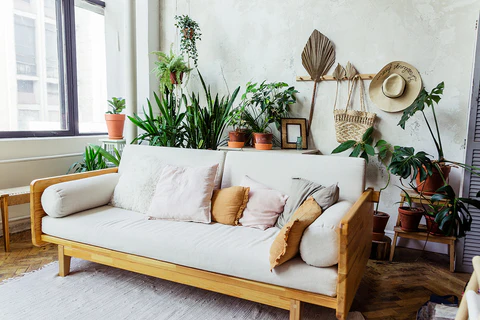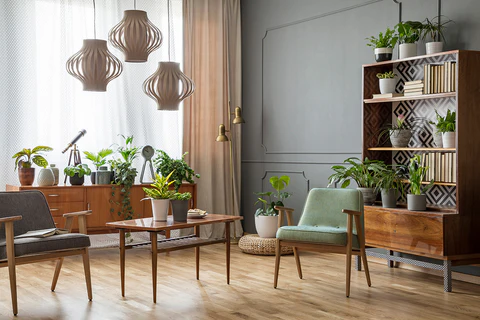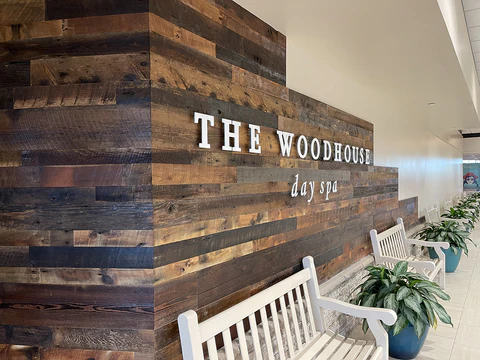The world of fashion and design trends is constantly evolving. Many styles emerge, only to fade away before making a comeback in a new era. Each generation tends to embrace certain styles, while the next might view them with disdain. But before you know it, those same styles resurface. Even experts in the field struggle to predict exactly what will catch on, what will endure, and when shifts will occur.
Yet, there's one design trend that remains timeless and unwavering: the use of wood. From the dawn of humanity to this very moment, humans have relied on wood, and this reliance won't cease. While the applications of wood may follow a cyclical pattern, its presence in design is here to stay. This is why the biophilic design movement has gained so much attention.
The biophilia hypothesis suggests that humans inherently seek a deeper connection with life and nature. Edward O. Wilson, the renowned American biologist and author, emphasized that biophilia reflects our innate desire to focus on life and processes akin to life.

Research indicates that environments disconnected from nature can negatively impact both psychological and physical health. To address this, innovators developed the biophilic design concept, which seeks to enhance human connections to nature by integrating natural elements into buildings and living spaces. While green architecture aims to minimize the environmental footprint of construction, biophilic design goes further by addressing our intrinsic need to live alongside and remain connected to nature. Interestingly, signs of biophilic design can be traced back to one of the Seven Wonders of the Ancient World, the Hanging Gardens of Babylon!
According to a survey funded by the U.S. Environmental Protection Agency (EPA), we spend 90% of our time indoors. This highlights the importance of biophilic architecture as a means to reconnect people with nature. If you're someone who craves the tranquility of nature despite living in a bustling city, consider incorporating biophilic design into your space.
**Are there genuine health benefits to biophilic designs?**
Biophilic design leverages natural materials, natural light, and plants to create more pleasant and effective living environments. There's no denying the multitude of benefits it offers to people.
As cities grow more densely populated, the biophilic design concept can improve the psychological and physiological health of urban populations, including workers, shoppers, residents, and visitors. Studies show that introducing plants into indoor spaces reduces stress and enhances pain tolerance. In a typical living area, five medium-sized plants can boost air quality by approximately 75% and mental health by 60%. Other research demonstrates that natural sounds can accelerate healing 37% faster than traditional urban noise.
Moreover, children raised in green neighborhoods tend to have lower asthma rates compared to those in ordinary buildings. Green areas also correlate with reduced mortality rates. Cities designed with biophilic principles exhibit stronger crisis management skills and social connectivity, leading to fewer incidents of crime, violence, and aggression.

**How can the environment benefit from this design trend?**
Biophilic design stands out as one of the most sustainable approaches in architecture, benefiting both human well-being and the environment. As urbanization accelerates globally, the demand for nature within cities is increasing. By incorporating elements like plants, trees, rain gardens, and green roofs into urban ecosystems, buildings and cities can handle stormwater runoff more efficiently.
Adding greenery and vegetative roofs and walls to urban areas not only cuts carbon emissions but also decreases polluted water and boosts biodiversity. Plants act as biofilters, improving air quality. Studies reveal that structures with vegetation, green rooftops, and shaded streets can reduce heating and cooling demands by 25% and stabilize temperatures by 50%.
**Can biophilic designs positively influence the economy?**
At first glance, biophilic design might seem costly due to the maintenance of natural elements and premium organic materials. However, the health and environmental advantages can offset these initial investments. Using non-toxic, natural building materials and adopting biophilic practices in workplaces creates cleaner, stress-reduced environments that promote employee well-being and motivation. A study found that considering biophilic design could save New York City nearly $470 million annually through increased worker productivity and $1.7 billion in crime-related expenses. Additionally, properties featuring biophilic design often sell for 16% more than conventional builds.

**Direct and Indirect Connections to Nature**
Many of us yearn for nature and need to connect with it to achieve balance and harmony in our lives. However, as urban lifestyles become more prevalent, experiencing nature firsthand has grown rarer. Yet, interaction with nature—whether direct or indirect—has proven beneficial. Direct experiences include interacting with plants, natural light, and water, while indirect or virtual experiences involve using natural materials like wood, faux plants, birdwatching, or watching nature documentaries. While indirect experiences offer practical solutions for spaces lacking greenery or windows, nothing surpasses the positive impact of real natural elements.
So, whether it’s adding more plants, installing a wooden wall, setting up an aquarium, or bringing another touch of nature into your space, embrace biophilic design wherever it matters most to you!
**References:**
(1) "E. O. Wilson," Wikipedia The Free Encyclopedia, 25 June 2021, https://en.wikipedia.org/wiki/E._O._Wilson
(4) (5) Tobias Roberts, "What Is Biophilic Design?" Stories, July 21, 2020, https://www.buildwithrise.com/stories/biophilic-design
(6) "Q&A: What are the benefits of biophilic design?" Chapman Taylor, January 13, 2020, https://www.chapmantaylor.com/news/q-a-what-are-the-benefits-of-biophilic-design
(2) (3) (7) (8) (9) (10) (11) (12) (13) "Biophilic Design," Wikipedia The Free Encyclopedia, 24 June 2021, https://en.wikipedia.org/wiki/Biophilic_design#cite_note-Kellert,_Stephen_R._1993-2

Closed Type Water Saving Cooling Tower
If you want to know more about the products, please click the product details to view parameters, models, pictures, prices and other information.
Water Saving Cooling Tower,Grp Cooling Tower,Frp Circle Cooling Tower,Closed Type Cooling Tower
EBARA REFRIGERATION EQUIPMENT & SYSTEMS (CHINA) CO., LTD. , https://www.ebara-hvac.com